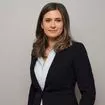1. Key takeaways
Claim interpretation
When interpreting a patent claim, the person skilled in the art does not apply a philological understanding, but determines the technical meaning of the terms used with the aid of the description and the drawings. A feature in a patent claim is always to be interpreted in light of the claim as a whole. From the function of the individual features in the context of the patent claim as a whole, it must be deduced which technical function these features actually have individually and as a whole. The description and the drawings may show that the patent specification defines terms independently and, in this respect, may represent a patent´s own lexicon. Even if terms used in the patent deviate from general usage, it may therefore be that ultimately the meaning of the terms resulting from the patent specification is authoritative.
Priority
A claimed invention is to be considered the "same invention" as the invention in a previous application in terms of Article 87 EPC (priority right) if the skilled person can derive the subject-matter of the claim directly and unambiguously, using common general knowledge, from the previous application as a whole.
Inventive Step, Obviousness
Inventive step is to be assessed from an objective point of view; the subjective ideas of the applicant or inventor are irrelevant.
The assessment of inventive step starts from a realistic starting point in the prior art. There can be several realistic starting points. It is not necessary to identify the "most promising" starting point.
In general, a claimed solution is obvious if the skilled person would be motivated, i.e. have an incentive, to consider the claimed solution and would implement it as a next step in developing the prior art. It may be relevant whether the skilled person would have expected any particular difficulties in taking any next step(s). The absence of a reasonable expectation of success (or more in general: non-obviousness) does not follow from the mere fact that other ways of solving the underlying problem are also suggested in the prior art and/or (would) have been pursued by others.
For assessing inventive step it is not the question whether the skilled person would inevitably arrive at the same result (falling within the scope of the claim or not). Rather, it is sufficient (but also necessary) for denying inventive step that the skilled person would without inventive contribution arrive at a result which is covered by a claim.
A technical effect or advantage achieved by the claimed subject matter compared to the prior art may be an indication for inventive step. A feature that is selected in an arbitrary way out of several possibilities cannot generally contribute to inventive step.
Hindsight is to be avoided. The question of inventive step should not be answered by searching retrospectively, with knowledge of the patented subject matter or solution, for any (combination) prior art disclosures from which that solution could be deduced.
Burden of proof
Whether inventive step is acknowledged is to be assed on a case-by-case basis and requires a legal evaluation of all relevant facts and circumstances. The boruden of presentation and proof with regard to the facts from which the lack of validity of the patent is derived and other circumstances favourable to the invalidity or revocation lies with the claimant in a revocation action.
The ultimate assessment of the relevant facts and circumstances is a question of law which does not lend itself to the taking of evidence.
2. Division
Court of First Instance – Munich (DE) Central Division
3. UPC number
ORD_598362/2023, ORD_598363/2023
4. Type of proceedings
Revocation Action, Counterclaim for revocation
5. Parties
Sanofi-Aventis Deutschland GmbH, Sanofi Winthrop Industrie S.A., Sanofi-Aventis Groupe v. Amgen, Inc.
Regeneron Pharmaceuticals Inc. v. Amgen, Inc.
6. Patent(s)
EP 3 666 797 B1
7. Body of legislation / Rules
Art. 54 and 65(1) UPCA, Rules 44(e)-(g), 25.1(b)-(d) RoP
To view the full article, click here.
The content of this article is intended to provide a general guide to the subject matter. Specialist advice should be sought about your specific circumstances.



